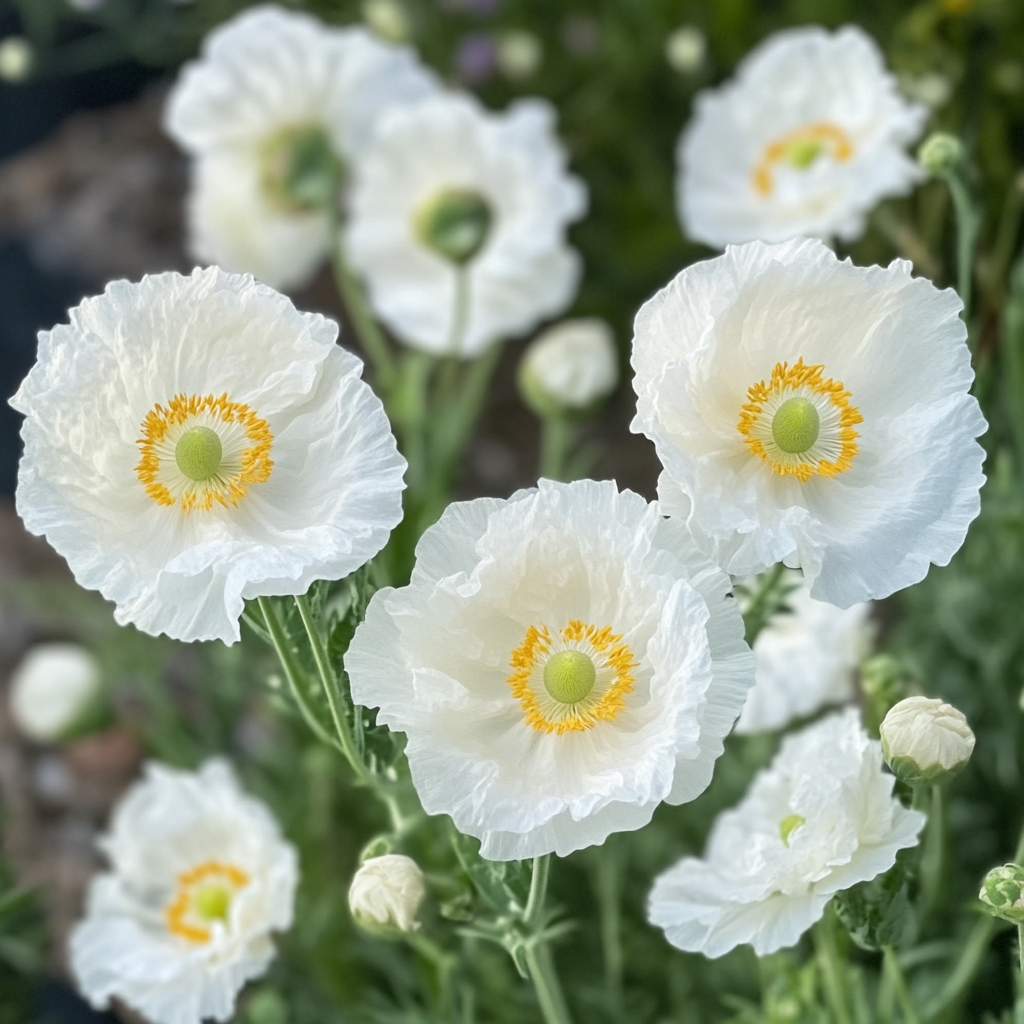Grow Honeynut Winter Squash – The Sweet, Nutty Heirloom You Need in Your Garden
About Honeynut Winter Squash
Honeynut Winter Squash is a relatively new heirloom hybrid variety, developed through careful breeding to maximize flavor, compact size, and nutritional value. Resembling a miniature butternut squash, this variety has gained popularity among chefs and gardeners alike for its intensely sweet taste, smooth texture, and vibrant orange flesh. It's often called the "dessert squash" thanks to its natural caramelized flavor when roasted.
At OrganicIndiaSeeds.com, we offer high-quality Honeynut Winter Squash seeds so that home gardeners can enjoy growing this gourmet crop right in their backyard.

Why Grow Honeynut Winter Squash
There are many compelling reasons to grow this unique and productive winter squash:
-
Rich Flavor: The sweetness is more concentrated than traditional squash due to its small size.
-
Nutritional Value: High in beta-carotene, fiber, and vitamin A.
-
Ideal for Small Spaces: Its compact vines are perfect for containers and raised beds.
-
Early Maturity: You can harvest within 90–110 days.
-
Culinary Versatility: From roasting to soups and baking, it’s a favorite in the kitchen.
-
Storage Friendly: It stores well for several months after curing.
Whether you're aiming for homegrown healthy vegetables or adding gourmet variety to your diet, Honeynut Squash delivers on every front.
When to Plant Honeynut Winter Squash
For best results, follow these timing guidelines:
-
Start seeds indoors 2–4 weeks before the last expected frost.
-
Transplant outdoors after the risk of frost has passed and soil temperatures are at least 18°C (65°F).
-
Direct sowing is also possible in late spring or early summer, especially in warmer climates.
-
You’ll typically see fruits ready for harvest in just under four months.
Growing Honeynut Squash from seeds during the warm season ensures strong vine development and rich fruit production.
Where to Plant Honeynut Winter Squash
Honeynut Winter Squash grows best in:
-
Full sun areas (6–8 hours of sunlight daily)
-
Well-drained, fertile soil with a pH of 6.0–6.8
-
Garden beds, raised containers, or along fences where vines can sprawl or climb
Trellising is encouraged if space is limited. This not only saves space but keeps the fruits off the ground, reducing the risk of rot or pest damage.
How to Plant Honeynut Winter Squash
-
Soil Preparation: Add compost or aged manure to improve fertility.
-
Planting Depth: Sow seeds 1 inch deep.
-
Spacing: Space hills 3 feet apart or rows 18–24 inches apart with 4–6 feet between rows.
-
Transplanting: For indoor-started seedlings, harden them off before transplanting.
-
Watering: Keep soil moist but not soggy during germination and early growth.
Growing organic Honeynut Winter Squash is a rewarding way to add a premium vegetable to your harvest.
How to Care for Honeynut Winter Squash
Caring for Honeynut Squash is relatively simple with consistent attention:
-
Watering: 1–2 inches of water per week; use soaker hoses to avoid wetting foliage.
-
Mulching: Apply mulch to retain moisture, suppress weeds, and regulate soil temperature.
-
Feeding: Use a balanced organic fertilizer during early growth and again when flowering begins.
-
Pest Control: Check regularly for squash bugs, aphids, and vine borers. Neem oil and insecticidal soap can help.
-
Pollination: Bees and other pollinators are essential. Avoid using chemicals that harm beneficial insects.
Regular pruning of older leaves can improve airflow and prevent mildew, keeping the plant vigorous and productive.
Companion Plants for Honeynut Winter Squash
To improve yield and protect your squash from pests, consider planting these alongside it:
-
Nasturtiums: Deter aphids and attract pollinators.
-
Marigolds: Naturally repel nematodes and beetles.
-
Corn: Offers shade and structure for sprawling vines.
-
Bush Beans: Fix nitrogen in the soil, helping squash grow stronger.
-
Radishes: Help in pest control when interplanted.
Avoid planting near potatoes or other vining crops to reduce competition and pest issues.
Harvesting Honeynut Winter Squash
-
Typically ready 90–110 days after sowing.
-
Skin turns from green to a rich tan or bronze hue.
-
Tap the skin; if it sounds hollow and feels hard, it’s ready.
-
Use pruning shears to cut the squash, leaving 1–2 inches of stem.
-
Cure the squash in a warm, dry area for 10–14 days to enhance sweetness and storage potential.
-
Store in a cool, dark place and enjoy your harvest for months.

Uses in the Kitchen
Honeynut is more than just a pretty squash – it’s a culinary treasure:
-
Roast halves with a drizzle of olive oil and maple syrup.
-
Blend into creamy soups or purée for baby food.
-
Use in savory pies, risottos, or pasta fillings.
-
Grill with herbs for a smoky, caramelized side dish.
Its sweet, earthy flavor stands up well in both sweet and savory dishes, making it a versatile vegetable in any kitchen.
Final Thoughts
If you're looking for a nutrient-dense, space-saving, and incredibly flavorful vegetable, Honeynut Winter Squash is a must-have for your garden. Its compact vines, early harvest, and gourmet flavor make it a favorite among home gardeners and chefs alike.
Get started on your gardening journey with premium Honeynut Winter Squash seeds from OrganicIndiaSeeds.com. We provide trusted heirloom and hybrid varieties for passionate growers who want to cultivate their own sustainable, healthy food at home.


Commenta
Questo sito è protetto da hCaptcha e applica le Norme sulla privacy e i Termini di servizio di hCaptcha.